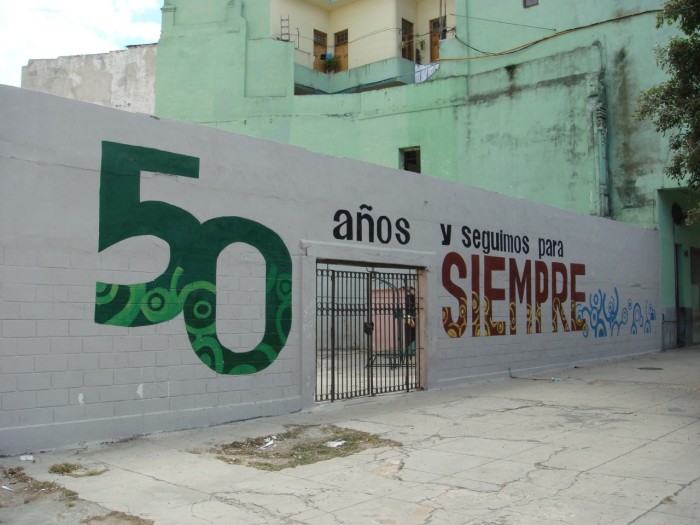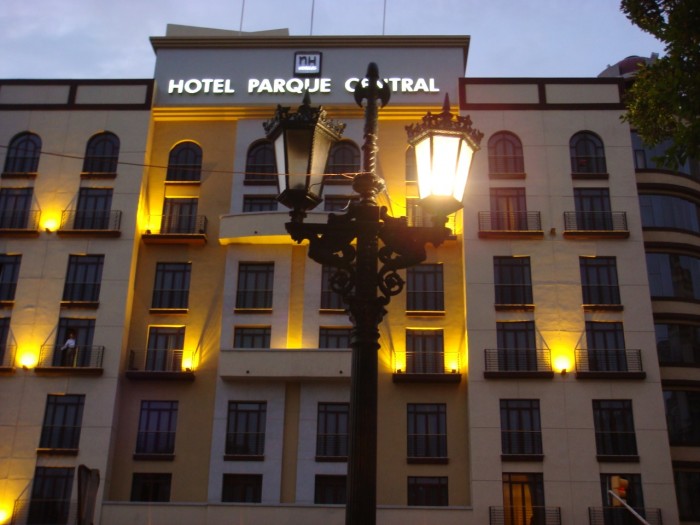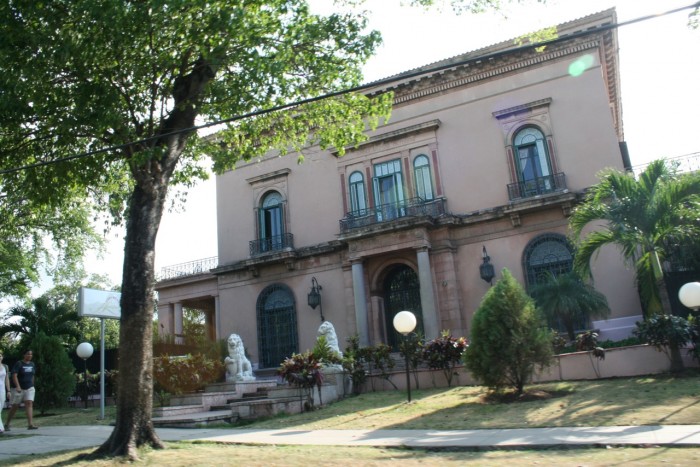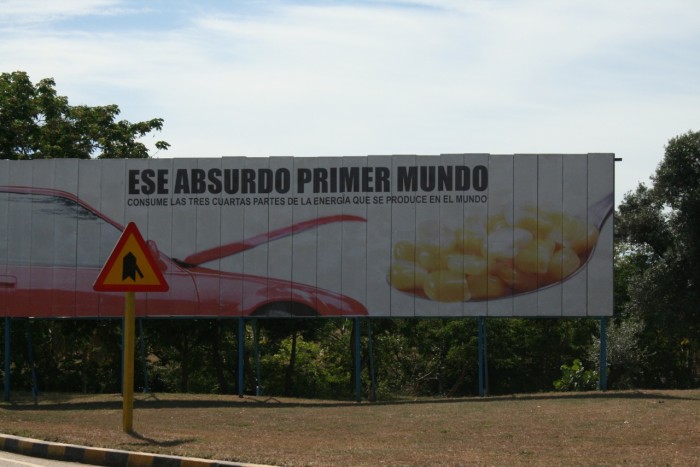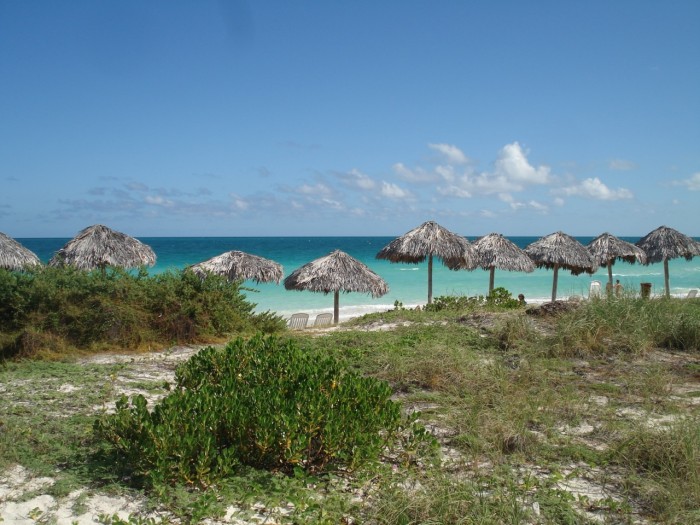This post is part of a series on the Latin American pink tide, moderated and edited by Massimiliano Mollona (Goldsmiths, University of London).
Does Obama’s visit herald the end of the Cuban Revolution?
On Thursday, 18 December 2014, I received an urgent WhatsApp message from a Cuban friend, who was then in Spain with his Spanish girlfriend.[1]
“Pon CNN ahora mismo! Se acaba el bloqueo.” (Turn on CNN now! The blockade is over.)
This merely turned out to be the start of ongoing negotiations to reestablish diplomatic relations between the two countries, disrupted since 1961. However, it inevitably raised a crucial question: if the blockade is indeed lifted, what will happen to Cuba? I did not have the answer back then, nor do I have it now, and I will not, in spite of the title, turn this post into a forecast. However, what is relevant about the question is how often it gets to be asked in relation to Cuba. It was asked in the 1980s, when Perestroika was set in motion in the Soviet Union; in the 1990s with the collapse of Soviet communism (Kaufman Purcell 1991); in 2008, with Fidel Castro’s illness (McKinley Jr. 2008); from 2011 to 2013 with Raúl Castro’s new economic and migratory policies (Sweig and Bustamante 2013), in 2015 with Barack Obama’s announcement (Labott 2014); and more recently in 2016 with Obama’s visit to the island (Anderson 2016). While each period resulted in slight transformations of Cuban politics, none witnessed the end of the Revolution. Is this still the case today?
While Fidel Castro’s commitment to the ideological elements of the Revolution strongly shaped the direction of the political project in Cuba until 2008, his absence from the public has not seen the collapse of socialism, but it has seen a transformation of the Cuban state in the hands of Raúl (Gold 2015). This transformation, however, cannot be conceptualized as a simple “evolution” toward a market economy, nor does it respond to similar processes taking shape in other Latin American countries that are shifting away from pink. Cuba still presents a unique case within Latin America, mostly for its very peculiar relationship to the United States and particularly because of the ongoing economic embargo. In this way, this is not a post about the end of the pink tide in Cuba. But I can venture some observations on how Obama’s visit impacts Cuba’s “permanent revolution” and flag some sites where the future of the revolution will be played out.
There is no doubt that Obama’s visit to Cuba is a powerful symbolic event of the normalization of relations between the two countries. Obama is the first US president to visit Cuba in nine decades, and many Cubans see the arrival of the president as “major victory of the Cuban Socialist Revolutionary people” (Lage Dávila 2016), especially since in his speech addressing the Cuban people, Obama admitted that the past US policy toward Cuba did not work. Much has changed since Raúl Castro assumed office in 2008: US citizens can now travel to Cuba, emigration has been increasingly normalized so that Cubans can travel and work overseas with greater ease, forms of semi- and private property have emerged, and state employment has decreased in favor of ever-more-popular self-employed ventures such as restaurants, room rental, craft makers, urban agriculture, and other ventures surrounding tourism. On a larger scale, tourism deals have been signed not just with Spanish and Canadian firms, dominant in the 2000s, but also now with North American cruise ship companies, which will start docking in the newly refurbished port of Mariel in May (Anderson 2016). The coming of the Rolling Stones, which had formerly been banned from playing in Cuba, is another symbolic event in the current toing and froing of the old Cold War nemeses.
In Cuba, as in Miami, there are as many differences of opinions as there are recipes for moros y cristianos[2] regarding the visit of Obama and its possible consequences for Cuba. From the staunch anti-Castro Cubans in Miami there ensued a plethora of comments about La Momia’s[3] publication on Granma[4] on “El Hermano Obama”[5] (Castro Ruz 2016), speculating whether he is actually lucid enough to write himself. Conversely, many Cubans on the island still draw on Fidel Castro’s published reflections as parameter for official state lines. Supporters and critics[6] of the Cuban government’s policies have made a statement about Obama’s visit, and despite radical slants toward left and right, common themes emerge. To the left, the value of education and health within the Revolution is continuously hailed as a major achievement that the US has been unable to claim and are highlighted as predominant claims for not succumbing to Obama’s capitalism. To the right, the ever-present clamor for human rights, particularly freedom of speech and political dissidence, figure more prominent than ever as Obama made a point of meeting with dissidents both in Miami as well as in Cuba. And on all sides, there has been a focus on cuentapropismo (self-employment) as one of the central foci of future relations.
Cuentapropistas were signaled out by Obama as the economic sector that can bring prosperity to Cuba, as the burgeoning civil society and as the bloom of a market economy. Symbolically, Obama had a meal at a Paladar[7] upon his visit to Havana. This sector of the economy, which was allowed to emerge at a time of crisis and was eventually regulated and co-opted into the Revolution (Gold 2011), has once more become the focus of research and policy. And while it may indeed be the sector most welcoming of economic opening to the United States—because it heavily relies on tourism and often suffers from the scarcities in food and resources—it cannot, for the types of services it provides, become the powerhouse of the economy. The scientific poll, the agricultural sector, and the construction industries, still state owned (Rodríguez Rivera 2016), will be crucial centers of struggle in the near future. There are already indications of the kinds of transformations that will take place around these industries, for example, in the illegal but tolerated emergence of collectives of professionals, especially of architects. With the booming of the property industry as the sale of private homes was legalized in 2013 (see Gold forthcoming), the increase of tourism and the tacit presence of Cuban-Americans buying houses through Cubans on the island,[8] the construction industry is flourishing and will give rise to a class of professionals as well as property owners that will rearticulate Cuban social structures in a way similar to other former Soviet Eastern European countries.
Another sector most likely to be affected by the normalization of relations will be the urban agriculture sector, which has become a banner for the Revolution’s capacity to weather economic hardship, as well to promote ecologically and sustainably committed agriculture. Obama’s visit resulted in an agreement between US Agriculture Secretary Tom Vilsack and Cuban Agriculture Minister Gustavo Rodríguez Rollero to promote the sharing of ideas and research between the two country’s agricultural sectors, and Obama has mentioned the importance of technology transfer to Cuba (Altieri 2016). The small farmers and cooperatives that control 25 percent of Cuba’s land and produce 65 percent of its food will not be able to compete with large-scale and subsidized US farmers.
The tendency of transnational agribusinesses to deal with economies of scale, where land is in the hands of a few corporations, has the potential to shift small-scale farmers off their land. At a time of global ecological crisis, Cuba’s urban farmers may find a profitable world market in which to sell their produce. However, this may come at an increased cost of local food, as is already the case. The success of local farmers will depend on the state’s capacity to protect its local market and strengthen the autonomy of cooperatives and individual farmers.
Fifty-five years of Revolution have given the Cuban people a large measure of political awareness, a strong dose of education, and a sometimes overrated sense of national sovereignty, which may be the best legacies of the historic generation that made the Revolution. It is this sense of national sovereignty that can be a potentially powerful, even though diffuse, political force. The historic trajectory of the Cuban Revolution, and the fact that Obama’s visit took place even while the historic leaders of the Revolution are in power, fuels the political potential of the Revolution. Within the region, and globally, Cuba has been a focal point for anticapitalism since the 1950s and into the new millennium. But more importantly, it has also been a historical focal point of post and anticolonialism, which has been at the core of many “pink” social and political movements in Latin America in the past fifteen years.
It is very difficult to predict the direction the Cuban Revolution will take. Cubans I talk to say simultaneously that things are not as they used to be and that everything stays the same, and there is probably a measure of truth in both appreciations. But, a stubborn fact cannot be ignored: those who can are buying property on the quays.
Marina Gold is a Social Anthropologist with an area expertise on Cuba. She is a researcher at Bergen University, affiliated to ERC Project titled “Egalitarianism: Forms, Processes, Comparisons” held by Prof. Bruce Kapferer, where she explores human rights discourse and the refugee crisis in Europe. She currently holds a guest researcher position at the University of Zurich.
This paper was written thanks to funding support from the ERC project “Egalitarianism: Forms, Processes, Comparisons” within the University of Bergen.
All photos in the post are credited to the author.
Notes
[1] This has been a common phenomenon in Cuba, increasingly since the 1990s: young Cubans meeting and marrying foreigners for a visa. While this is not the case of my friend, who lives in Cuba and spends a few months a year in Europe on short-term work contracts, similar cases are widespread and have strongly shaped the younger generations’ experiences of nationalism.
[2] Moros y cristianos, literally “Moors and Christians” refers to one of the typical Cuban dishes of rice and black beans, which seems simple to prepare but has multiple culinary secretes according to each family tradition.
[3] The Mummy, a derogatory reference to Fidel Castro, alluding to his age and capacity to elude death.
[4] The official newspaper of the Communist Party.
[5] Brother Obama was the title of Fidel’s reflections published on 28 March after Obama’s visit.
[6] For a variety of opinions check the following blogs: Segunda Cita, La Joven Cuba, A Mano, Y Sin Permiso, Libreta de apuntes, Generation Y, and Babalu Blog.
[7] A restaurant run in a person’s home, one of the first expressions of self-employment that emerged in Cuba in the 1990s.
[8] There are still restrictions on how many houses Cubans can buy, and foreigners are heavily restricted in the buying of property in Cuba, but there are loopholes (Finkelstein 2015).
References
Altieri, Miguel. 2016. “Cuba’s sustainable agriculture at risk in U.S. thaw.” The Conversation, 25 March.
Anderson, John Lee. 2016. “Cuba after Obama left.” The New Yorker, 1 April.
Castro Ruz, Fidel. 2016. “El Hermano Obama.” Granma, 28 March.
Finkelstein, Alex. 2015. “Cuba’s next revolution: Real estate.” World Property Journal, 14 August.
Gold, Marina. Forthcoming. Capitalist ventures of solidarity networks? Self-employment in post-Soviet Cuba. In L.F. Angosto-Ferrández and G.H. Presterudsteun, eds., Anthropologies of value. London: Pluto Press.
Gold, Marina. 2015. People and state in socialist Cuba: Ideas and practices of revolution. New York: Palgrave Macmillan.
Gold, Marina. 2011. Urban gardens: Private property or the ultimate socialist experience? In Carlos Riobo, ed., Cuban intersections of literary and urban spaces, pp. 25–48. New York: State University New York Press.
Kaufman Purcell, Susan. 1991. Collapsing Cuba. Foreign Affairs 71(1).
Labott, Elise. 2014. “Cuba releases American Alan Gross, paves way for historic easing of American sanctions.” CNN, 17 December.
Lage Dávila, Agustín. 2016. “Obama y la economía Cubana: Entender lo que no se dijo.” Cubadebate, 23 March.
McKinley, James C., Jr. 2008. “Fidel Castro resigns as Cuba’s president.” The New York Times, 20 February.
Rodríguez Rivera, Guillermo. 2016. “El progreso de Cuba y su sector privado.” Segunda Cita, 24 March.
Sweig, Julia. E., and Michael Bustamante. 2013. Cuba after communism: The economic reforms that are transforming the island. Foreign Affairs 92(4).
Cite as: Gold, Marina. 2016. “The end of the pink tide: Cuba.” FocaalBlog, 25 April. www.focaalblog.com/2016/04/25/marina-gold-the-end-of-the-pink-tide-cuba.
Discover more from FocaalBlog
Subscribe to get the latest posts sent to your email.
